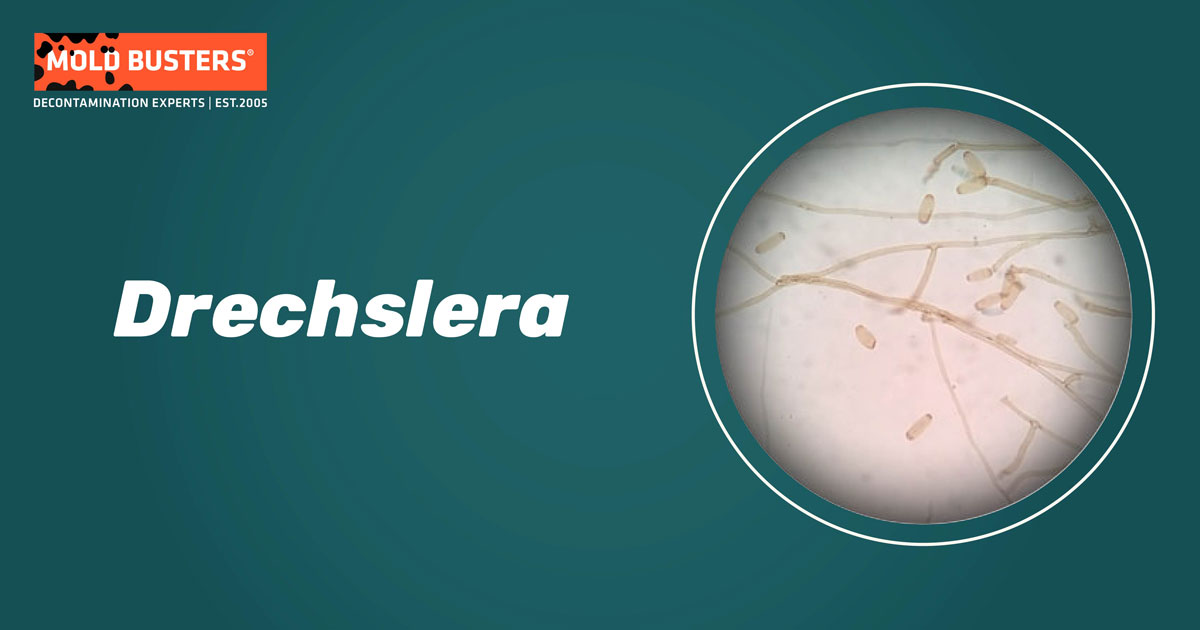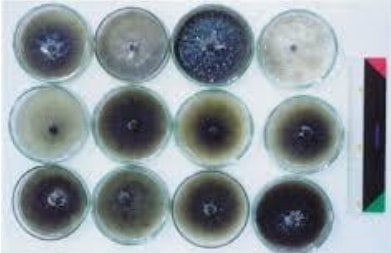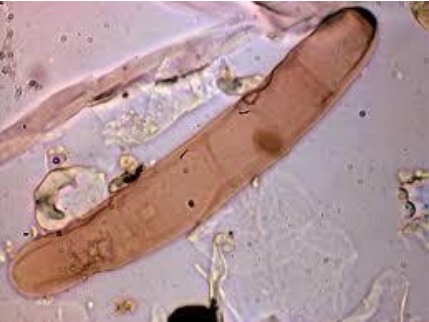Drechslera is a genus of fungi that taxonomically belongs to the family Pleosporacae, order Pleosporales, class Dotideomycetes, division Ascomycota, kingdom Fungi. Many species of the genus Drechslera are plant pathogens, particularly grasses. This genus has more than 40 species. [2]
Drechslera is found in plant remains and soil. These species cause allergies in humans, from which allergic sinusitis often occurs. They produce type I fungal hypersensitivity in humans.
This article is a review of the genus Drechslera, the species belonging to this genus, and their impact on plants and humans. [1]

What is Drechslera?
Many species of the genus Drechslera are plant pathogens and saprophytes. Various studies have shown that the optimal temperature for the development of this fungus is 25°C. The influence of temperature and light has a significant effect on sporulation in Drechslera hawaiiensis. Laboratory research has shown that in a 12-hour photoperiod, and in complete darkness, temperatures of 25––30°C are most suitable for the best sporulation in these species. [3]
Under the microscope, pseudoseptate conidia have a cylindrical shape and are pigmented. Each conidia cell is capable of germinating. The basal attachment scar is not noticeable and the area of attachment is rounded [3].
Spores of Drechslera can cause allergies. In people with weak immunity, spores of these species can cause bronchopulmonary mycoses and also fungal sinusitis. [4]


Drechslera species
Most species of the genus Drechslera have a pathogenic effect on plants. For example:
- Drechslera gigantea: plant pathogen that causes eyespot disease on many host plants.
- Drechslera glycines: A fungal plant pathogen of soybeans.
- Drechslera poae: Often causes problems on lawns, golf courses and sports fields. It attacks species such as bluegrasses (Poa spp), ryegrasses (Lolium spp), bentgrasses (Agrostis spp), and fescues (Festuca spp). The disease attacks all parts of the plant and spreads in April and May when the weather is cool. The high nitrogen content in the soil also contributes to the spread of the disease. Spores are transmitted by wind or water droplets and survive in thatch. The lawn should be treated with a fungicide and frequent watering should also be avoided.
- Drechslera hawaiiensis: Causes allergies in humans.
What is the impact of Drechslera spp on human health?
Components that affect the air quality in the indoor environment, including mold, are becoming very important. [5] Various studies show a significant presence of aerofungal allergen spores in the indoor environment, including spores of Drechslera spp. [6]
Fungi and mold can have a significant impact on sick building syndrome and can be associated with other building-related diseases. Also, some people can have an allergic response. [5]
What are the symptoms of allergies caused by Drechslera spp?
Certain species of Drechslera can have an allergenic effect on humans. The symptoms that these species can cause include hay fever, asthma, eczema, fatigue, runny nose, sneezing, stuffy nose, plugged ears, watery/bloodshot eyes, itchy eyes/nose/ear/skin.
Drechslera hawaiiensis has been reported to cause disease in humans, including bronchopulmonary illness. [7]
Allergies caused by Drechslera species can also occur in completely healthy people; paranasal sinusitis is common. [8]
How to treat Drechslera spp?
In the indoor environment, fungal control can be carried out in different ways: (a) cleaning; (b) using an air filter or air purifier; and/or (c) identifying the source of contamination and remediating the contamination. [9]
In order to reduce the input of spores from the outside to the inside, it is necessary to close the windows and turn on the air conditioning. Moisture is the primary cause of mold growth. Therefore, it is very important that the relative humidity in the indoor environment is less than 50%. Moisture control also includes fixing any leaky taps, pipes and appliances; proper ventilation, especially in bathrooms and kitchens; and waterproofing your basement.
Moreover, biologically active components in plants have been reported to eliminate pathogenic microorganisms such as fungi. Essential oils and components of plants can inhibit the growth of environmental isolates. Plant extracts and essential oils are therefore effective yet less hazardous than synthetic disinfectants when it comes to cleaning mold. [9]
At Mold Busters, we use the latest technology to test your home for mold and to remediate any mold contamination for long-lasting protection against mold.
Keeping in mind the amount of time we spend indoors, good air quality–without the presence of mold and other air allergens–is extremely important for good health. So leave it to Mold Busters to keep your indoor environment healthy. Call us today or make an appointment online.

Did you know?
Basements in Canada are the most affected by the Penicillium/Aspergillus mold group?! Find out more exciting mold stats and facts inside our mold statistics page.
References:
- Proc. Imp. Acad. Japan 6: 355 (1930)
- GBIF Secretariat (2019). GBIF Backbone Taxonomy. Checklist dataset doi.org accessed via GBIF.org on 2020-09-20.
- Rabbani N, Bajwa R, Javaid A (2011): Influence of culturing conditions on growth and sporulation of Drechslera hawaiiensis, the foliar blight pathogen of Marsilea minuta L. African Journal of Biotechnology Vol. 10(10), pp. 1863-1872,
- Levetin, E., Horner, W. E., Scott, J. A., Barnes, C., Baxi, S., Chew, G. L., … & Phipatanakul, W. (2016). Taxonomy of allergenic fungi. The Journal of Allergy and Clinical Immunology: In Practice, 4(3), 375-385.
- Singh, J. (2005). Toxic moulds and indoor air quality. Indoor and Built Environment, 14(3-4), 229-234.
- Karuppasamy C, Ralte L, & Kannan R (2013). A preliminary assessment of Aerofungal Allergens from the wards of civil hospital Aizawl. International Journal of Environmental Sciences, 4(3), 274-283.
- McALEER, R. O. S. E., Kroenert, D. B., Elder, J. L., & Froudist, J. H. (1981). Allergic bronchopulmonary disease caused by Curvularia lunata and Drechslera hawaiiensis. Thorax, 36(5), 338-344.
- Rolston, K. V., Hopfer, R. L., & Larson, D. L. (1985). Infections caused by Drechslera species: case report and review of the literature. Reviews of infectious diseases, 7(4), 525-529.
- Khan, A. H., & Karuppayil, S. M. (2012). Fungal pollution of indoor environments and its management. Saudi journal of biological sciences, 19(4), 405-426.

Get Special Gift: Industry-Standard Mold Removal Guidelines
Download the industry-standard guidelines that Mold Busters use in their own mold removal services, including news, tips and special offers:

Written by:
John Ward
Account Executive
Mold Busters
Fact checked by:
Michael Golubev
General Manager
Mold Busters
